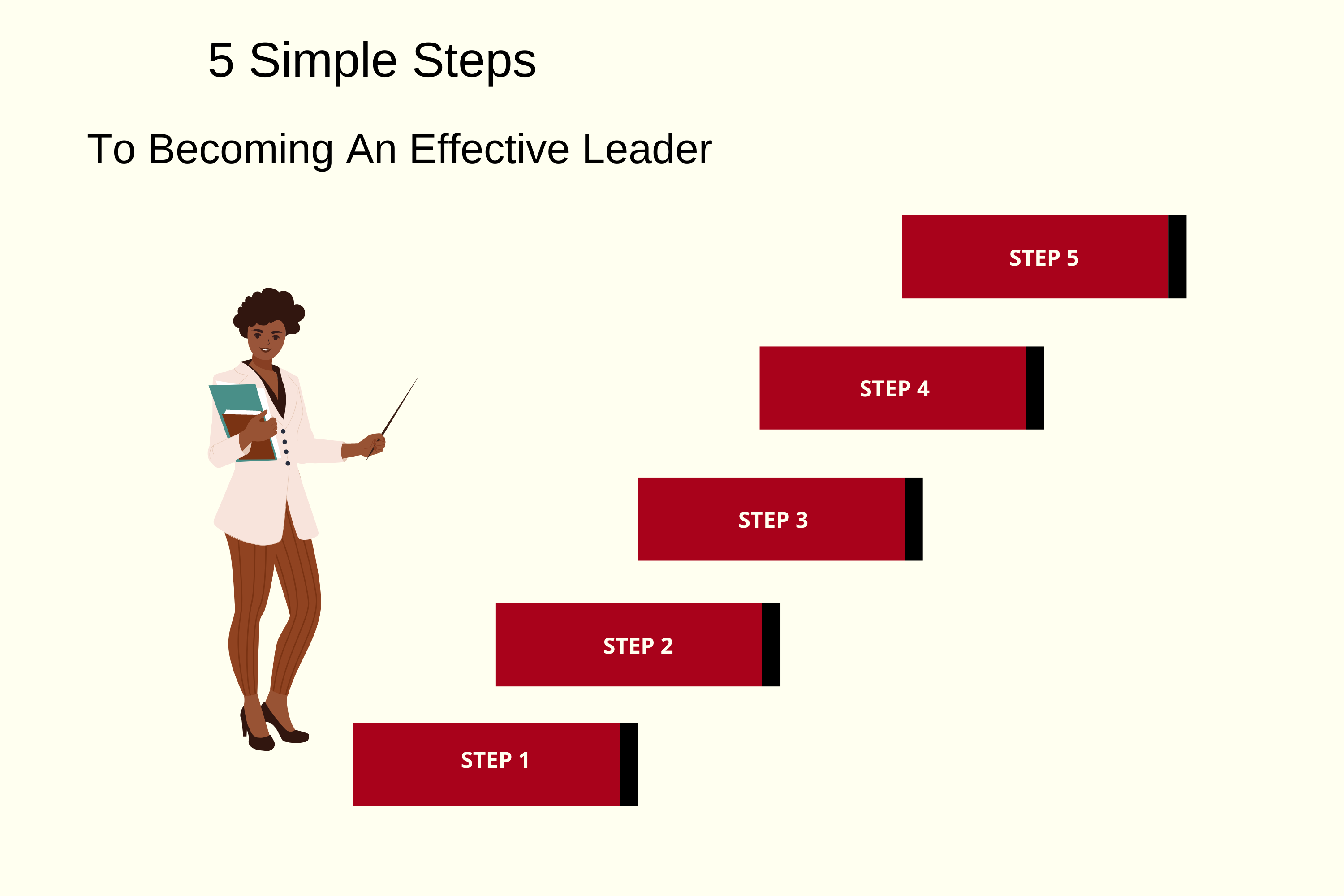Five Simple Steps To Becoming An Effective Leader
A leader is positioned to make some of life’s most difficult decisions. When faced with challenges, leaders implement strategies to make the best decision, and some may agree that it’s an area we can all to improve in.
When we think about the characteristics of a good leader, we need to first layout the foundation and define “what is a leader?” There are a wide range of characteristics and definitions, but when you simplify the meaning, a leader is a compassionate counselor, a master team-builder and excels at operational excellence. A leader can inspire cooperation and team progression. A leader focus on goals and techniques for the entire team – not just individual development. And finally, a leader is keen at accepting “and” offering the direction of the team.
There's no doubt about it, leadership isn’t always innate in a person. Some people believe that leaders are genetically predisposed. For others, good leaders emerge from bad situations. Even if you don't believe it, leadership is as essential to life as breathing.
Now that we’ve uncovered what is a leader, it’s time to take your leadership to the next level.
Here are 5 simple steps to becoming an effective leader:
1. Get to know your team before you start working with them. It's critical to have get-to-know-you sessions if you want to lead a team. Be familiar with each team member, including their specific assets and liabilities. Make sure you know exactly what role each member plays and how to pivot if necessary.
• Give some thought to these questions and do your homework before setting up the meetings:
o What are the passions of the people on your team?
o What are their unique strengths, abilities, and area of opportunities?
o What are the talents and specific skill sets that enable others to succeed?
o How does each member like to be celebrated?
o What are their career goals and aspirations?
• It is important for every member on the team to understand role clarity, identify strengths and areas for improvement to avoid feeling underappreciated or overburdened by workload. Individuals must also understand how others perceive them and how they contribute to team objectives/successes. Before you can effectively lead others, you must first demonstrate that you have a solid understanding of your own team and how you will support moving forward.
2. Set an example for the people you work with. To lead effectively, one must become an excellent example to those you lead. Your words have power, and your actions will help build a culture of trust. Individuals will follow people they trust. Your team will have a front row seat to your leader style so it’s important to showcase how you are a model leader who listens, communicates well, and dedicated to the success of the overall team. Just telling them what to do isn't enough. They need to see it!
• The most effective leaders don’t strive to dominate others. They connect with the group, fully transparent by providing members with valuable information, and provides support and additional resources as the team navigate through their careers.
• Consistent check-ins with team on removing roadblocks, project updates, discuss future initiatives and available resources to execute on job responsibilities.
3. Be as specific as possible about your goals. A good leader has a clear vision of the work assigned to the team. To succeed, a leader must clearly define roles, sets goals, monitors progress and adjust things as needed. Attention to detail is key, even the smallest things are important to your team and will show that you care.
• Make sure everyone knows what your goals are and how you plan to achieve them.
4. Establish guidelines. Provide precise instructions to your team. As a result, everyone will know exactly what is expected of them and how they will achieve their goals.
• Be on the lookout for potential problems and find ways to remove any roadblocks. Think about any learning lessons from the past. Keep your team members in the loop and informed.
• By providing whatever expertise you have on the topic with them, you may help save both time and effort. Determine who is responsible for what, and then check that everyone is aligned.
• Provide clear instructions to your team members, including a deadline for their completion. Remind them of their duties by email or phone call if they fail to fulfill by due date.
5. Instill a sense of inclusiveness and celebrate the small wins. It's important to acknowledge big accomplishments and celebrate the small wins with your employees. A simple ‘thank you’ or ‘you’re doing a great job’ goes a long way when you a recognize them for doing an excellent job and meeting their goals. If it’s within scope and you have budget, give incentives, or have a friendly competition to help build morale and increase productivity.
• Accountability motivates people to do their best work. As a bonus, rewarding your employees show that you value their efforts and appreciate the hard work.
The thought of taking on a leadership role can be intimidating, but it is a necessary in any work setting. Investing the time and effort will help build future leaders.
You now have the tools to becoming an effective leader. As the leader, you set the standard by setting realistic expectations for everyone on your team to follow. Get to know your team, be the example of what true leadership embodies, define team goals and establish role clarity, set guidelines and celebrate the small wins. With the right training, hands on experience and mentorship, you will become a leader in your own right and at the right time.


